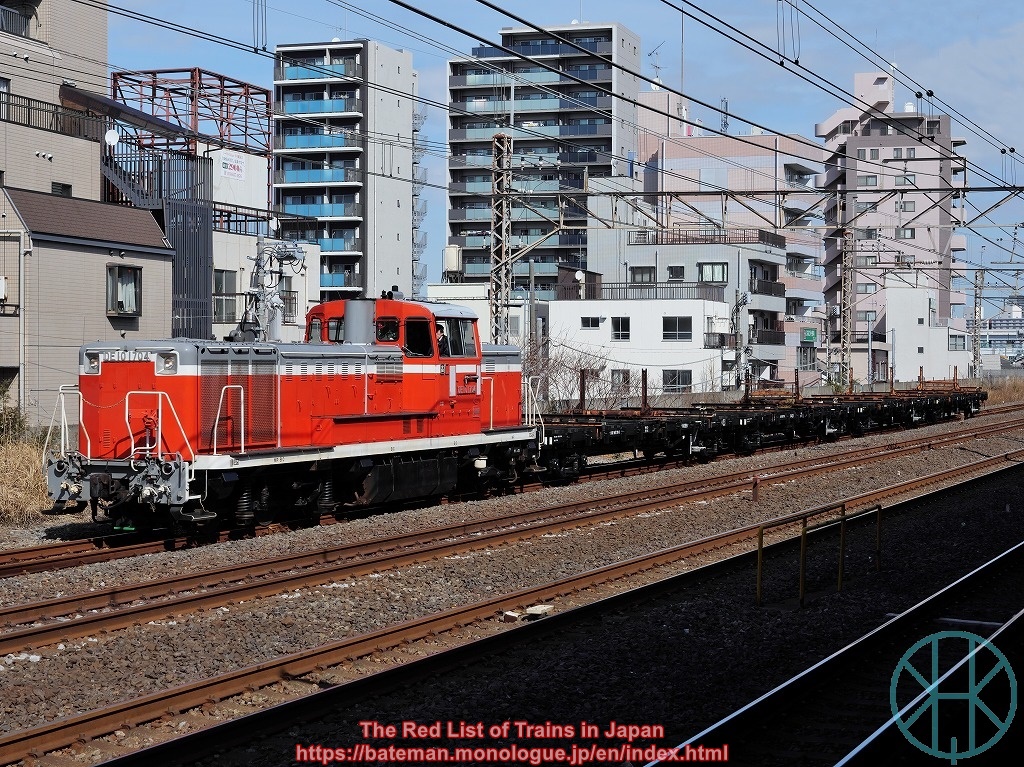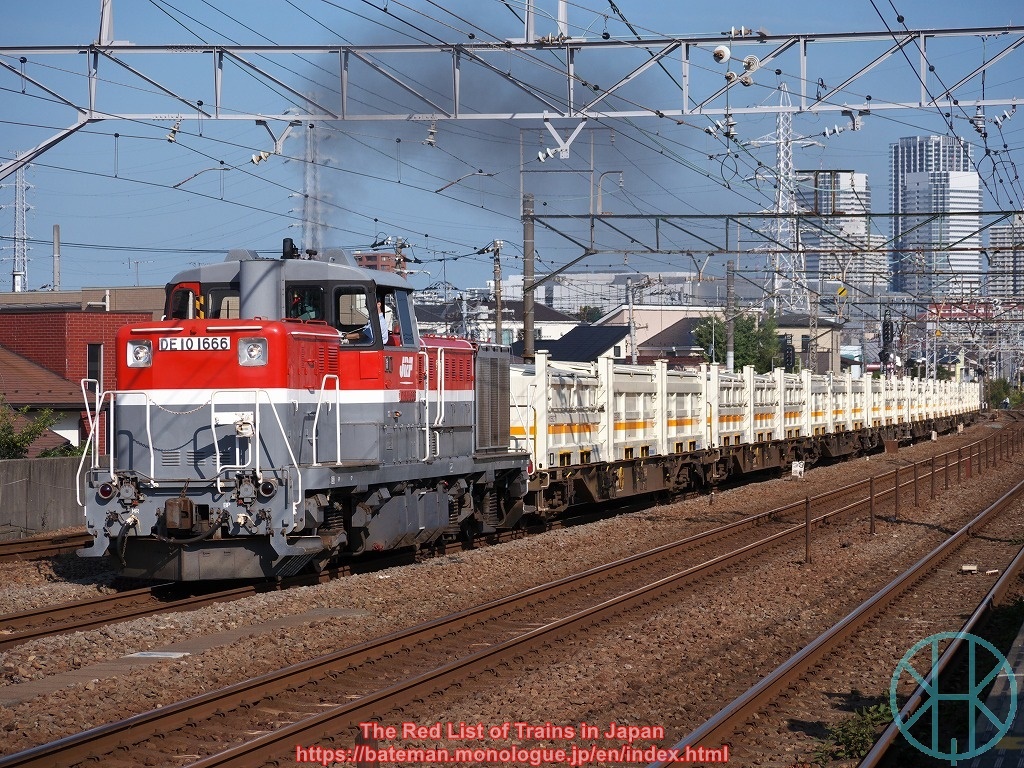JNR Class DE10

Data (as of 5 Apr 2025)
| Status: | Vulnerable |
| (JR West, | |
| JR Kyushu) | |
| Endangered | |
| (JR Hokkaido, Kinuura) | |
| Critically Endangered | |
| (JR East, JR Freight) | |
| Least Concern | |
| (others*) | |
| Extinct | |
| (JR Central, | |
| JR Shikoku) | |
| Constructed in: | 1966-78 |
| Number built: | 722** |
| Registered: | 65 |
*Depends on companies, see descriptions below.
**Including 14 locos converted from Class DE15.
History
Class DE10 is a type of diesel locomotive developed by Japanese National Railways. It was introduced mainly to passenger and freight trains in rural areas to replace steam locomotives. It has also been used as one of the most common shunters at depots.
It looks like Class DD51, but the DE10 is smaller and lighter than the DD51. Furthermore, driver's cab of DE10 is not placed in the middle of the locomotive, and the cab is installed vertically to the track (a driver looks either left or right when seated). These features allowed smooth shunting, but could be a little hard for the driver when the loco is running mainlines.
The DE10 locos were first delivered to Ichinoseki in Iwate Prefecture (Tohoku region) and Matsuyama in Ehime Prefecture (Shikoku). As the trial had been successful, JNR mass-produced the locos and introduced to literally almost of all major depots. They mainly engaged in shunting and short-distance trains on branch lines and rural lines, but a few of them were used on Sleeper Limited Express services like Akatsuki (Shin-Osaka - Sasebo, hauled by DE10 between Haiki and Sasebo). However, many of them became redundant by the 1980s as JNR discontinued rural lines and short-distance freight trains, and replaced coaching stock with diesel multiple units. When JNR was privatised in 1987, only 361 out of 708 locos were succeeded by JR companies.
It is worth noting that the Class DE10 is the only type that was allocated to all seven JR companies. After the privatisation, six JRs (except JR Freight) used them for shunting and a few stopping services on rural lines, but the latter ones were discontinued by 1999. JR Central scrapped all by 2008, and JR Shikoku did so by 2023, but other four companies still retain a few of them. JR Freight has been using the DE10s across the country including Tokyo, but the number has dramatically been declining since the 2010s.
In addition, some private railways, most of which only provide freight services, own a few purchased from JNR or JRs. Moreover, some of these private companies ordered their own locos identical to the DE10.
Current Operations & Future Prospects
JR Hokkaido uses for shunting at depots and some Norokko seasonal trains in Kushiro area. Some locos at Hakodate Depot could be despatched in case of emergency in Seikan Tunnel.
JR East and JR Kyushu use them for shunting and ad hoc works (mostly engineering work). JR West does so too, but sometimes uses for rail tours like SL Yamaguchi (Shin-Yamaguchi - Tsuwano) as well. JR East plans to demolish all locomotives including the DE10 by 2025.
JR Freight uses them at Sendai, Shin-Tsurumi (near Yokohama), Aichi (near Nagoya) and Okayama and Moji depots as shunters, but they are declining as the company introduces Class DD200 and Class HD300.
Hachinohe Rinkai Railway (Aomori Prefecture), Sendai Rinkai Railway (Miyagi Prefecture) and Kinuura Rinkai Railway (Aichi Prefecture) use them for shunting and freight trains, and some of them were renumbered in accordance with their methods (e.g. Class DE65 of Sendai Rinkai Railway). Tobu, Moka Railway (Tochigi Prefecture), Watarase Keikoku Railway (Gunma Prefecture) and Sagano Scenic Railway (Kyoto Prefecture, also known as Sagano Romantic Train) use them for rail tours, and those owned by Tobu and Moka work with steam locomotives.
Photos

The DE10 was often seen at stations when there were loco-hauled passenger trains.

JR Freight still uses a few in Tokyo and Yokohama areas.
(Updated: 5 Apr 2025)
